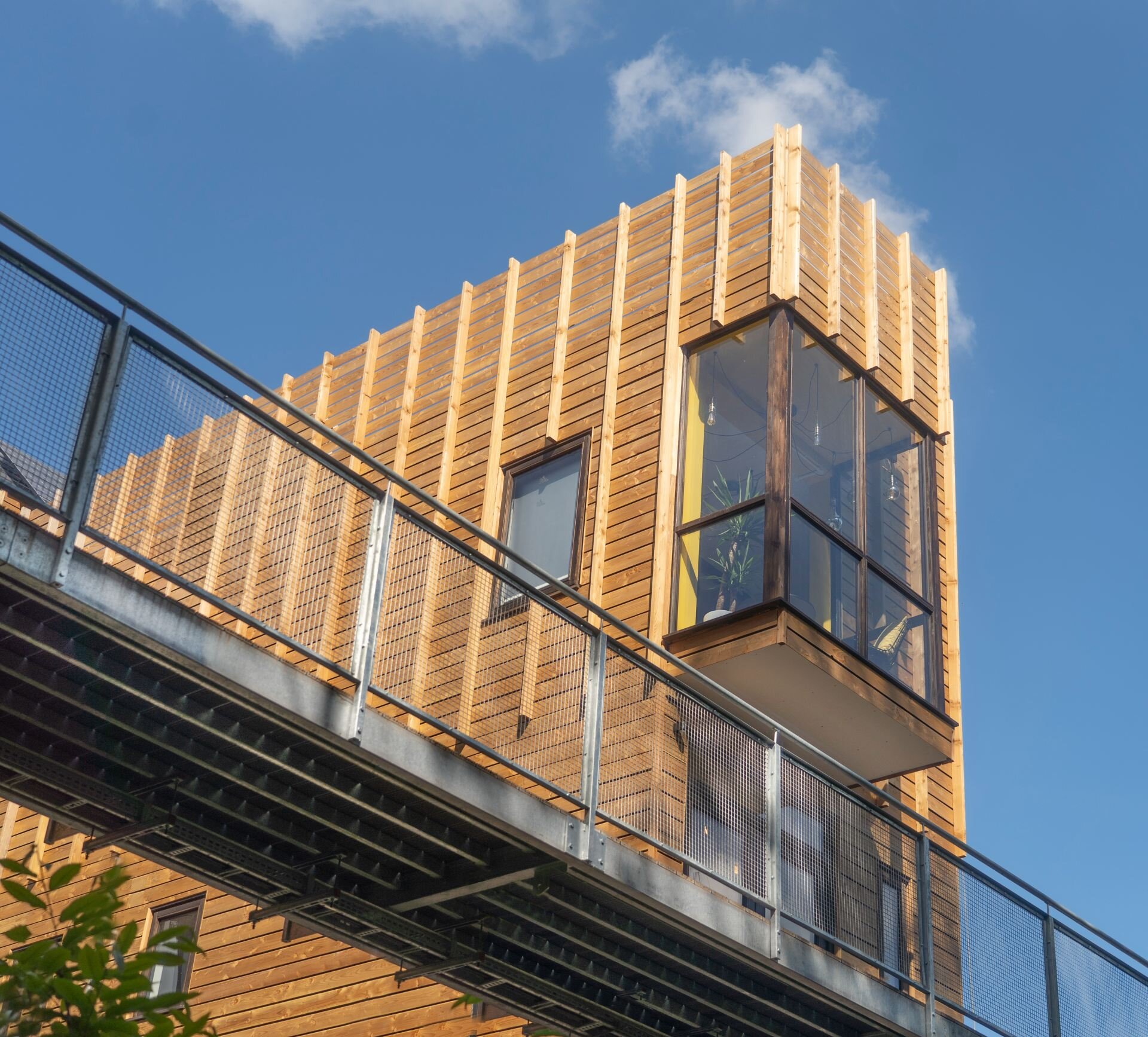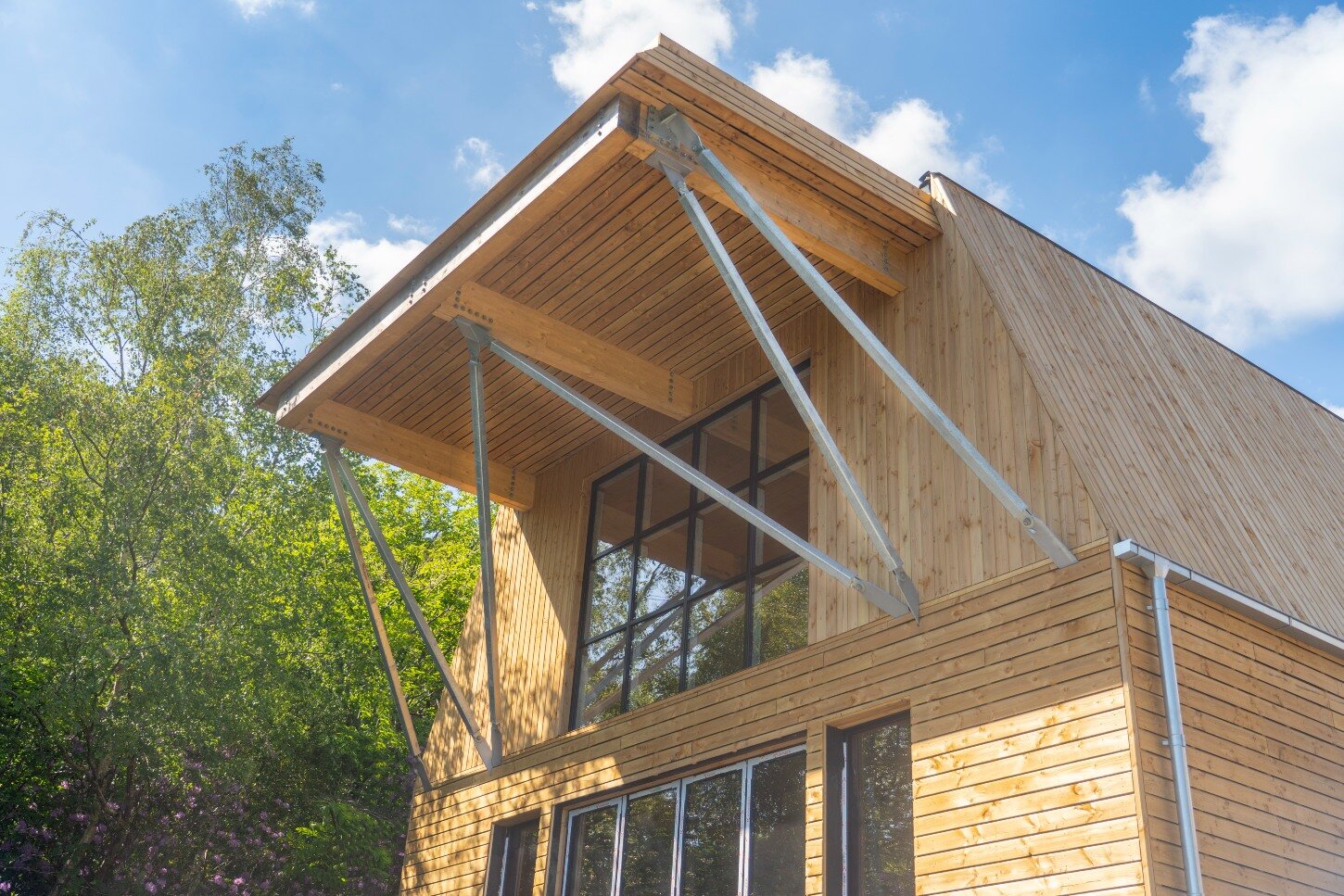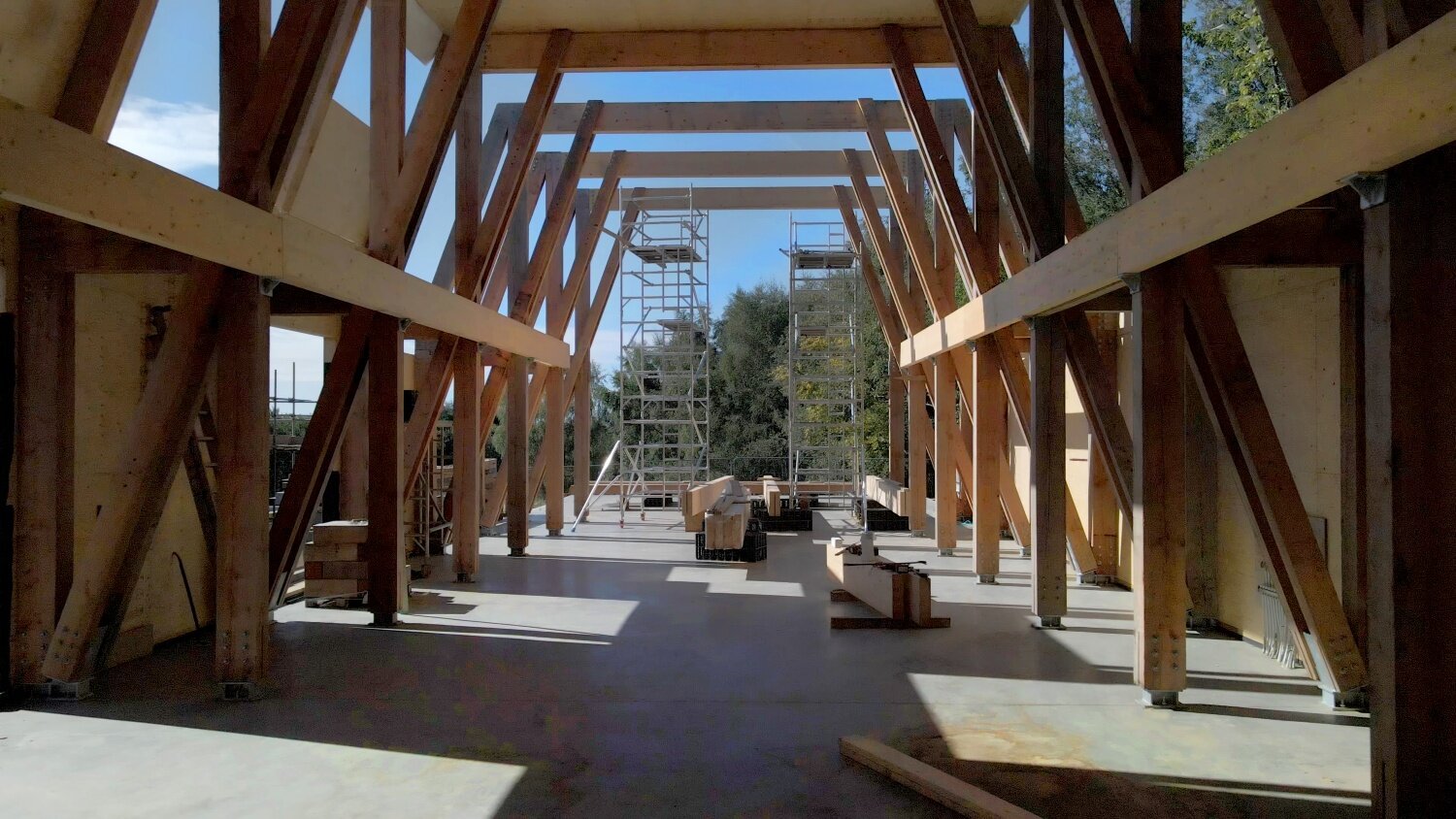Meet the Architect… Q&A with Steven Johnson.
Flimwell Park’s architect, Steven Johnson of The Architecture Ensemble who has played a vital role in the making of Flimwell Park, answers all our burning questions about the design concept and inspiration behind Flimwell Park.
From making underground forts at a young age, to establishing a deep understanding and passion for the way architects can work with the natural landscape and materials, we find out how Steven has helped to create one of the leading multi-use sustainable developments in the UK.
Steven Johnson shooting with Grohe X at Flimwell Park
How did you first get into Architecture?
Drawing and building underground forts and tree houses in our local woods, as a kid, on what was the edge of an expanding Minneapolis, Minnesota. I was very lucky in that architecture, as a profession, was in my head since early junior high school. No competing options whatsoever, so it was an easy feed into university and an eventual emigration to Europe with its incredible wealth of architecture and Landscape architecture!
Where did your interest in architecture stem from?
Thinking I knew what architecture was before university only to discover, at university, that the culture of architecture was far deeper, richer, and more life-affecting than I’d thought. It’s an art, a craft, and a mild form of social-environmental science that has the power to help people and the environment if practised well. Once you enter that space, there’s no going back!
What inspires your work?
Plants, music, and gathering teams of fellow passionate and creative people to complete projects - hence “The Architecture Ensemble". Working with timber helps to create architecture with a certain resonance and musicality and that makes finding fellow timber travellers far easier.
How has Flimwell Park helped to define sustainable developments in the UK?
It has created an opportunity to seriously explore what happens when a community, a listening client, ecologists, planners, designers, and a good and open-minded builder can work cohesively on a challenging site with huge social and environmental potential. Working with the extensive project team we formed has been an inspiration and this, I think we all believe, increases the potential for what we think will be a resilient and sustainable community and woodland-driven development.
How did you decide on Flimwell Park's style?
Through nearly 20 years of cycling through the East Sussex countryside between Wadhurst and Flimwell observing the spectacular rolling landscape and wonderfully functional and diverse rural buildings scattered within this landscape. The historic relationship between the region and its woodlands had an overriding influence in that woodlands and timber have had such a profound effect upon the entire local social, environmental, and economic condition.
The architecture on this site is a direct response to the trees that will eventually filter between these buildings hopefully forming a symbiotic arrangement between the forest, the architecture, and the people who inhabit and work in the buildings. The great question is: How can human activities within a valued and protected landscape be generated directly from the land and benefit the community while sitting comfortably within the social and environmental situation at Flimwell. Architecture and its systems as an adaptable and dynamic extension of landscape and nature.
Who is your favourite architect?
If there were an arm-wrestle between the Swiss architect, Peter Zumthor, and the Japanese architect, Shigeru Ban, I’d give it to Ban - just. They are both materials and structures masters, witty, and soulful humanists with a wonderful knack of dancing between the real world of construction and the academic world of research and teaching. They have also, so far, wonderfully avoided going mega-development - as so many architects tend to do.
Favourite thing to do when you aren't busy on site or designing and teaching?
Playing and listening to music.










